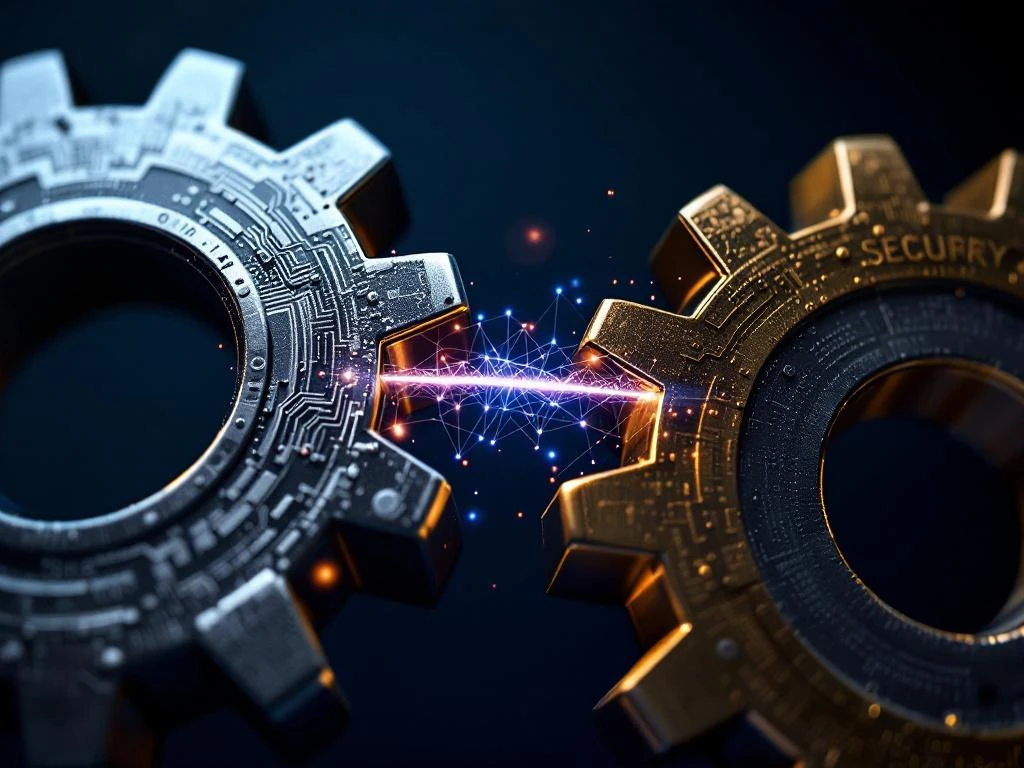

-
UK: +44 203 8876 770
US: 315 508 6500 - cybersecurity@thisisiceberg.com
-
8 Devonshire Square, London, EC2M 4YJ

Building an effective cybersecurity team for a mid-sized organization requires strategic planning and clear understanding of your specific security needs. Start by identifying essential roles like security analysts, engineers, and a team leader who can provide direction. Consider your organization’s risk profile, industry regulations, and budget constraints when determining team size. Focus on hiring professionals with a balanced mix of technical skills and soft skills who align with your company culture. Structure your team to maximize collaboration with IT and business functions, while establishing clear reporting lines. Remember that finding the right talent often requires creative recruitment strategies in today’s competitive market.
For mid-sized organizations, a well-rounded cybersecurity team typically requires several core positions to provide adequate protection. The foundation should include security analysts who monitor systems for threats, security engineers who implement and maintain security tools, and a team leader who coordinates efforts and communicates with leadership.
Start with these fundamental roles:
If budget allows, consider adding specialized roles such as vulnerability managers, threat intelligence analysts, or security awareness trainers. The key is prioritizing based on your risk profile. Organizations handling sensitive customer data or operating in regulated industries like healthcare or finance will need more robust teams compared to those with less sensitive information.
For organizations with limited resources, focus first on hiring versatile professionals who can handle multiple responsibilities. As your security program matures, you can add specialists to address specific threats or compliance requirements relevant to your industry.
The appropriate size for your cybersecurity team depends on several factors unique to your organization. There’s no one-size-fits-all formula, but key considerations include your company size, industry regulations, threat landscape, budget constraints, and security maturity level.
Here are the main factors to weigh when sizing your team:
One practical approach is to calculate the ratio of security professionals to overall IT staff or employees. Industry benchmarks suggest 1-2 security professionals per 100 employees for most mid-sized organizations, but this can vary significantly based on the factors above.
Remember that outsourcing certain security functions can be a viable strategy when building your team. This allows you to access specialized expertise for specific needs while maintaining a core internal team focused on your most critical security functions.
When hiring cybersecurity professionals, look for a balanced mix of technical abilities and soft skills. The most effective security team members combine solid technical knowledge with strong communication, problem-solving, and teamwork capabilities.
Key technical skills to prioritize include:
Equally important are these soft skills:
Don’t overlook cultural fit when hiring. Cybersecurity professionals need to work effectively with teams across your organization. Look for candidates who demonstrate alignment with your company values and work environment.
Industry experience can be valuable but consider candidates from adjacent fields who bring fresh perspectives. Military veterans, IT professionals, and even those from analytical fields like finance often have transferable skills that make them excellent additions to security teams.
The most effective cybersecurity team structures align with your organization’s size, industry, and security needs. There are several common models to consider, each with advantages depending on your specific circumstances.
Consider these organizational approaches:
For most mid-sized organizations, a centralized or hybrid approach works best. This ensures consistency in security practices while maintaining connections to business operations.
Establish clear reporting lines, typically with the security leader reporting to the CIO, CTO, or directly to the CEO depending on your organizational structure. This reporting relationship signals the importance of security within your organization.
Create specialized teams or roles within your security department based on functional areas:
Ensure your security team has strong integration points with IT operations, development teams, and business units. Regular communication channels and formalized collaboration processes help break down silos and ensure security is embedded throughout the organization.
Attracting and retaining cybersecurity talent requires a multi-faceted approach that goes beyond competitive salaries. In today’s market, professionals are looking for meaningful work, growth opportunities, and work environments that support their wellbeing.
To attract top talent, consider these strategies:
For retention, implement these approaches:
Professional development is particularly important in cybersecurity due to the rapidly evolving threat landscape. Allocate budget for ongoing training and encourage team members to develop specialized expertise that benefits both them and your organization.
Consider partnering with specialized recruitment firms that understand the cybersecurity landscape and can help you access passive candidates not actively looking for new roles. These partnerships can significantly improve your ability to find the right talent in a competitive market.
Hi! I see you're interested in building a cybersecurity team for your organization. Many hiring managers face similar challenges in today's competitive market. Which best describes your current situation?
Building a cybersecurity team comes with several challenges that mid-sized organizations commonly face. Understanding these obstacles and having strategies to address them increases your chances of building an effective security function.
Common challenges include:
To overcome these challenges:
For budget challenges, prioritize your security investments based on risk. Focus first on controls that address your most significant threats and compliance requirements. This targeted approach helps demonstrate the value of security investments to business leadership.
Address organizational resistance by involving business units in security decisions and focusing on enablement rather than restriction. When security is viewed as helping the business operate safely rather than saying “no,” you’ll gain more support across the organization.
Building an effective cybersecurity team for your mid-sized organization requires thoughtful planning, strategic hiring, and ongoing development. Focus on creating a balanced team with the right skills to address your specific security risks while fitting within your organizational culture.
Remember these essential points:
As your organization grows, regularly reassess your security team structure and capabilities. What works for your current size may need adjustment as you expand or as the threat landscape evolves.
At Iceberg, we understand the challenges of building effective cybersecurity teams in today’s competitive market. We help organizations connect with elite cybersecurity professionals through our global network spanning 23 countries. When you’re ready to enhance your security team, discover how our specialized recruitment services can help you find the right talent faster without compromising on quality.
Building a strong cybersecurity team is an ongoing journey, not a one-time effort. With the right approach and support, your mid-sized organization can develop security capabilities that effectively protect your critical assets and enable business growth. If you have specific questions about your security staffing needs, contact us for tailored guidance on building the right team for your organization.













